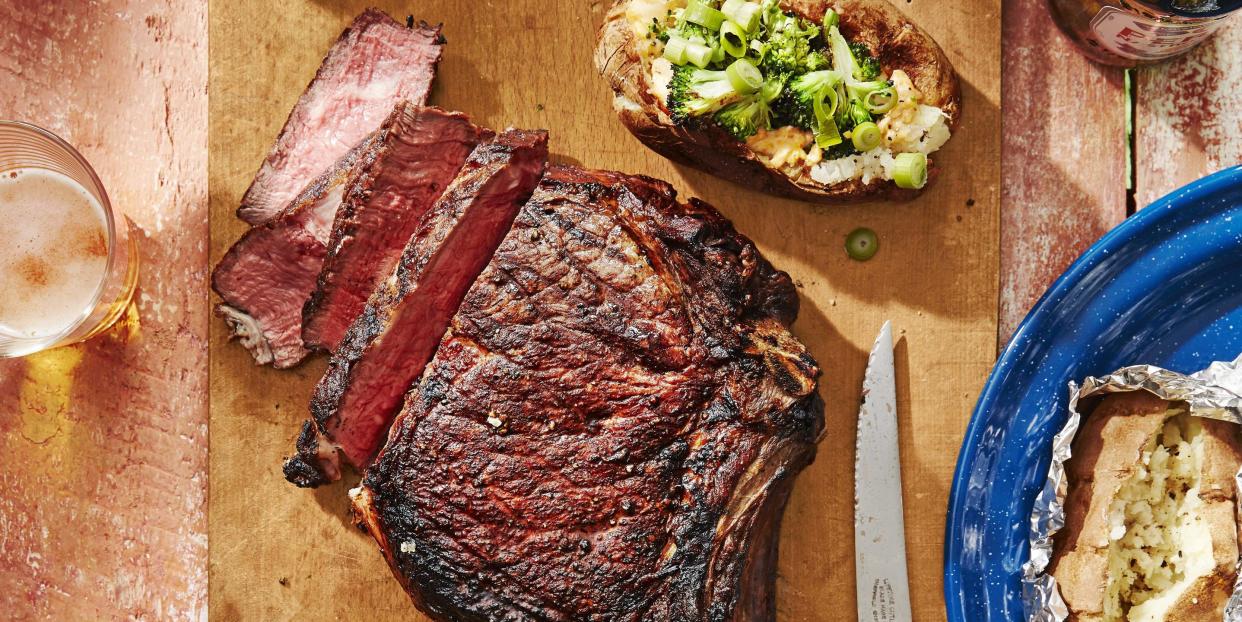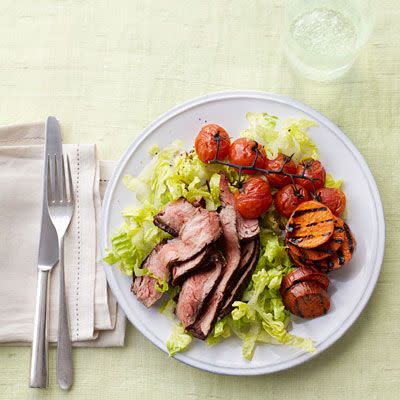How to Make Sure Your Leftover Steak Tastes Great

It happens: You brought home a couple delicious ribeyes, got your grill nice and hot, avoided all the most common grilling mistakes, and ended up with a couple perfectly done bone-in steaks. But unfortunately your eyes were bigger than your family's stomachs, and you've got some leftovers.
Those puppies were expensive, so you wrap them tightly and put them in the fridge for later. But what can you do with them? What's the tastiest, safest way to eat them? And how do you heat them back up without overcooking them? Don't worry. We're here to help. But first, you may want to consider whether you really want—or need—to reheat it.
A Case for Not Reheating
While there are ways to reheat steak, we need to start with a little real talk: Most of those methods are exactly what you're not looking for when dealing with leftovers. That is, they're not easy, and they're not foolproof. In fact, the methods most likely to work are complicated or fussy. And the methods that are simple (like the microwave) are likely to overcook your steak, making it both dry and tough. Luckily, there's a very easy way to prepare leftover steak that preserves all the tender, juicy flavor you worked so hard for and it's easier than any reheating method: Eat it cold!
Sliced thin, cold steak makes a fantastic topping on a salad. Or, put it between bread, along with tomato, mayo, and lettuce for a steak sandwich. It's also delicious simply sliced and eaten cold or room temperature along with yesterday's reheated sides. So before you move on, consider whether simply eating it out of the fridge would work, and give that a try.

Is it Safe to Reheat Steak?
Eating steak that is cold, or even room temperature, is perfectly safe, as long as it hasn't been in what the USDA calls the "danger zone" (the temperature range between 40°F and 140°F) for longer than 2 hours. (This is true of most any food.) And reheating steak is also safe—again, as long as it is either heated to above 140°F, or it is consumed quickly. Generally the problem with reheating steak isn't that it is unsafe, it's that the recooking often overcooks and dries out the meat.
How Do You Reheat Steak Without Drying it Out?
If you find that you simply have to eat your steak warm, then there are a couple options that are less likely to dry it out:
The oven / skillet method: If you have an unsliced, fully cooked 1/2-inch-thick steak to reheat, try a method recommended by Cooks Illustrated: Warm it in a 250°F oven for about 30 minutes, until it reaches 110°F on an instant read thermometer, and then sear it in a cast iron pan. You'll need to be careful that you don't let it overcook in the oven, so be extra careful, especially with smaller steaks, and check the temperature regularly.
The "sous vide" method: Sous vide (French for "under vacuum") is a method of cooking ingredients inside a bag, in a water bath, at a controlled temperature. As you might imagine, this is a really good method for keeping food from drying out, as the plastic (and the water) allow no moisture to escape. Kitchn recommends this method, which involves heating the steak in a freezer bag, in a pot of 130°F water, for about 5 minutes, until it's warmed through. At this point you can sear it off in a pan, or can simply slice it up and eat it. While it won't dry out, you do want to be careful that the water remains at the right temperature, or your medium-rare steak will turn out more well-done.
The hot gravy method: This method, recommended by the authors of the new edition of the Joy of Cooking, is an especially smart trick if you're serving reheated roast steak to guests—if, for instance, you wanted to cook it well ahead of time, to make serving courses a little easier at a dinner party. This method should also work well with leftovers. Simply slice the cold meat as thin as you possibly can, place it on heated plates, and pour hot gravy or sauce overtop. The warm plate plus the warm sauce will remove the chill without further cooking (and thus toughening) the steak.
You Might Also Like

